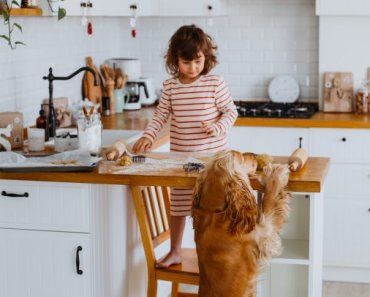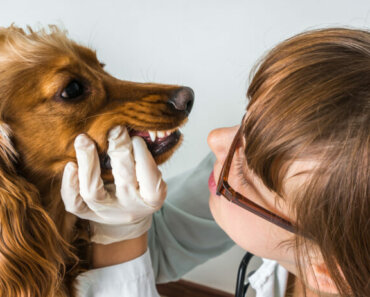
For original article click here
The special bond between a child and a pet can develop into a lifelong friendship. But, interactions between kids and pets also can be fraught with issues, as small children are often unable to interpret signals from pets asking for space, and injuries can occur. With proper adult supervision and guidance, pets and children can become the best of friends, despite the potential for missed cues.
To help develop loving bonds, here are four essential rules to promote peaceful relationships and positive interactions among the children—two- and four-legged—in your household.
#1: Teach your child to stay away from your pet’s food dish
Your child likely doesn’t want to share his mac and cheese, and would disapprove of a hand reaching for a bite, so teach him that your pet feels the same. Many pet-child altercations occur because of a perceived threat to resources, such as food, toys, treats, resting areas, or people. Manage mealtimes by completely separating your pets and children, ideally in different rooms, to allow you to clean up after your toddler’s snack time, and avoid a possible toxin ingestion for your pet. Dogs learn fast that a child in a highchair likely indicates dropped treats, and will quickly snatch up any fallen food. But, grapes, raisins, chocolate, and sugar-free snacks can pose a health hazard to your furry friend if she eats your child’s food, so keep your two- and four-legged children separate while eating, and clean up spilled food before allowing them to interact again.
#2: Actively supervise your pet and child when together
Although you may step out of the room for only a minute, a traumatic accident can happen in that brief time. All it takes is a second for a crawling baby to grab a tail, a toddler to fall on a sleeping dog, or a child to hug and kiss a pet who is asking for space, potentially resulting in serious injury. When your pet and child are in the same room, supervise their interactions. You may need to sit between your child and pet to run interference, especially if your baby is in the crawling or learning-to-walk phase, as unpredictable movements can startle your pet.
#3: Learn to read your pet’s warning signals, and teach your child to do the same
In hospital and news reports, parents often say their dog gave no warning signals before biting their child, but that is rarely the case. Pet owners are more likely to miss a pet’s warning, which is subtle, and not always easy to interpret. For example, many people believe a dog who licks you, likes you, when in fact, a licking dog may be trying to create space, especially if the licks are firm and pushy, and paired with stress signals. A quick lip lick or tongue flick is a sign of anxiety, as are the following cues:
- Whale eye (i.e., the pet turns her head, but focuses her eyes on the threat, showing the whites of the eyes)
- Yawning
- Body freezing
- Head turning away from threat
- Panting
- Drooling
- Low tail carriage
- Tense jaw with closed mouth
Many of these signals are easy to miss, as they can happen quickly, or are too subtle for inexperienced eyes.
#4: Offer your pet a safe space to relax undisturbed
As your child becomes mobile—advancing from sitting upright, to crawling, to walking—your pet will have to readjust to the changes. Each difference in position and movement can startle your furry friend, and may make her nervous and uncomfortable. Since many small children grip the nearest object to help pull them along or stand, that object may be your pet, and she may lash out if your child grabs on tightly. Create a safe retreat for your pet, where she can escape from mobile children and relax peacefully.

For cats, offer plenty of vertical-space options, such as climbing towers, cat trees, and wall shelving designed for feline perches. If your cat has a safe and comfortable perch where she can watch the household, without being in the center of activity, she will feel much less stressed. In addition to elevated lookouts for kitties, ensure the litter box is out of your child’s reach. Place the litter box in a room behind a baby gate that’s high enough off the ground for your cat to sneak through, or purchase a gate with a small, built-in cat door. Cats are highly private creatures, and would prefer to be left alone when eliminating.
While your dog can’t climb to escape your child’s affections, you can use the baby-gate method if your pooch is small enough to sneak under a raised gate. You can also create a safe zone for your dog in your family room, by providing a large exercise pen filled with novel toys, cozy bedding, and tasty treats, so your dog is still part of the family, but safe from stumbling toddlers and their grabbing hands. When your child is playing on the floor, offer your dog a stuffed Kong or other treat puzzle in her safe zone, to keep both “children” occupied.
Accidents can happen in the blink of an eye, despite you being in the same room as your pet and child. If a mishap occurs after normal business hours, contact us for emergency care for your ill or injured pet.


























